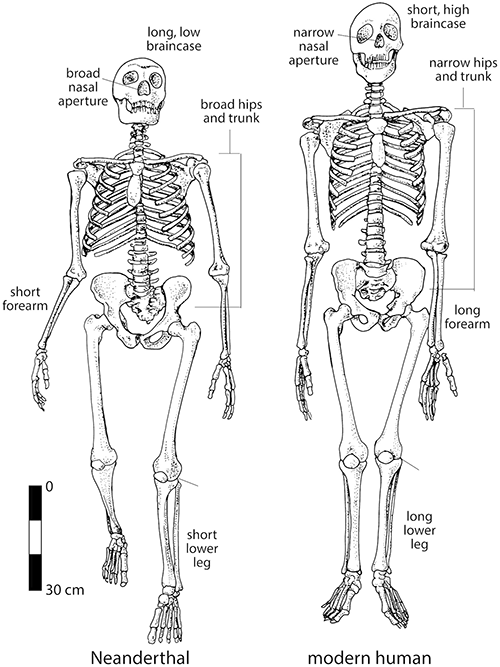Did Neanderthals Evolve to Live in Cold Climates?
Neanderthals (Homo neanderthalensis) are now extinct, but they existed in Eurasia together with modern humans (Homo sapiens) until about 40,000 years ago. The differences between Neanderthal and modern human skeletons have caused many researchers to try to understand the reasons for the differences. One explanation for their unique look is a series of adaptations to the cold climate of Europe and Asia during the Pleistocene. Their large nose opening could have helped them take in and warm up more air. Their short limbs likely helped them maintain their body heat.

Skeletal differences are the result of adaptations since Neanderthals’ and humans’ last common ancestor.
Recent studies have considered other reasons for the odd Neanderthal body. The robust bones could be a result of increased muscularity, which is not explained by a cold climate. Higher activity levels in the Neanderthal lifestyle could explain the trend toward muscularity. Another possible explanation for skeletal differences is a difference in testosterone and growth hormone levels. Ultimately, paleoanthropologists are still searching for the answer. Neanderthals may have emerged as hardy survivors of an Ice Age landscape, but the story their fossils tell might be a bit more complicated than that.
Robust Neanderthal bones could mean they were more muscular than modern humans—even as children!
By Elizabeth Panacciulli (’21)
